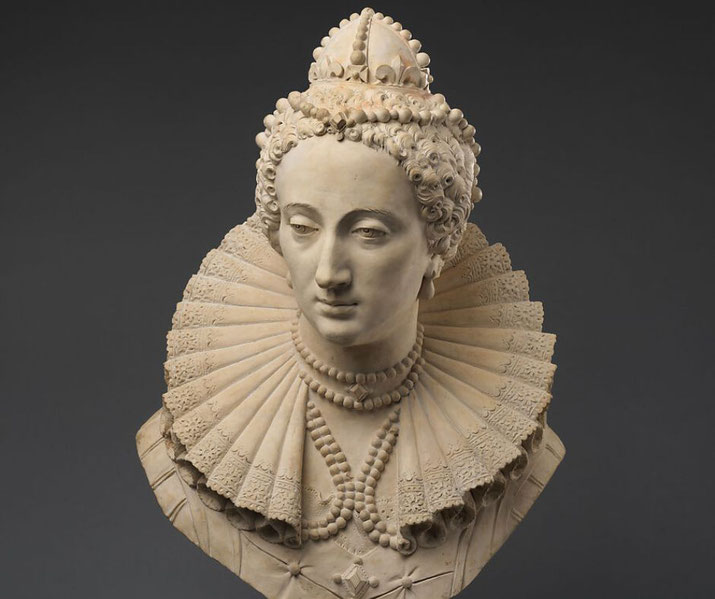The Virgin Queen: Why did Elizabeth I never marry?

Queen Elizabeth I ruled England from 1558 to 1603 and never took a husband, a decision that became one of the most discussed aspects of her reign.
Many people in England and across Europe viewed marriage as essential for a monarch as a means of strengthening dynasties and providing heirs.
However, Elizabeth refused every marriage proposal placed before her, and her choice influenced both home politics and foreign relations for more than forty years.
Several factors shaped her refusal, including lessons that were drawn from her childhood and her views on power and marriage.
How her childhood influenced her view of marriage
Elizabeth grew up in an environment where marriage carried great danger for women who were close to the throne.
She was born in 1533, as the daughter of Henry VIII and Anne Boleyn. In 1536, Anne was executed for treason, adultery, and incest, and Parliament soon passed the Second Succession Act, which declared Elizabeth illegitimate.
Henry’s later marriages created further examples of wives who fell out of favour.
Henry divorced Anne of Cleves because he did not think she was attractive and Catherine Howard suffered execution for adultery in 1542.
These events gave Elizabeth clear lessons about the risks of being a queen consort.

Her half-sister Mary I reinforced these lessons through her own unhappy marriage.
Mary wed Philip II of Spain in 1554, and the union angered many English subjects who feared Spanish influence.
Mary never became pregnant, and her political position weakened as her health declined.
Elizabeth observed that Mary’s marriage harmed her popularity and her authority, and she remembered the hostility that the match generated.
By the time she became queen, she had seen too many examples of marriage bringing ruin or political problems.
Political pressures for Elizabeth to marry
Elizabeth faced constant pressure from both English councillors and European rulers to marry.
Royal marriage had long been used to strengthen alliances and ensure royal succession.
Suitors included Philip II of Spain, Archduke Charles of Austria, and Francis, Duke of Alençon, who was also known as Duke of Anjou.
Each proposal offered diplomatic benefits, yet they threatened to upset the balance of power at home and abroad.
A Catholic husband would anger her Protestant subjects, and a Protestant match could provoke Catholic powers in Europe.
Elizabeth used these proposals to her advantage, as she prolonged negotiations without committing to any match.
In a way, marriage talks with foreign princes allowed her to strengthen England’s diplomatic position without sacrificing her independence.
Elizabeth’s ministers repeatedly urged her to marry in order to produce an heir.
William Cecil, her most trusted councillor, feared that England would descend into chaos if she died childless.
Parliament petitioned her to marry several times, especially in 1563, after she became gravely ill with smallpox in 1562 leading to questions about succession.
The difficulties of being a female monarch
Elizabeth ruled at a time when female rulers were rare and often considered weak.
English law gave husbands authority over their wives, which meant that marriage could place her under the power of a man.
She believed that a husband would limit her freedom to govern. So, by remaining unmarried, she retained full control over political decisions.
Elizabeth crafted a public image as the Virgin Queen, devoted entirely to her kingdom and her people.
This image strengthened her popularity and helped her avoid dividing her court by choosing one suitor over another.
Additionally, an unmarried queen prevented any foreign prince from gaining influence in England.
By staying single, she created a position where she remained the sole focus of loyalty and power.
Did Elizabeth have a personal objection to marriage?
Elizabeth’s personal views contributed strongly to her decision, as she reportedly spoke often of the dangers of childbirth and the suffering she believed many wives endured.
Her early experiences of imprisonment during Mary I’s reign taught her to mistrust situations that reduced her control.
She appeared to value her personal freedom more than the security that marriage could bring.
Elizabeth formed close attachments to men such as Robert Dudley, Earl of Leicester, yet she refused to wed any of them.
After Dudley’s wife Amy died in 1560, in suspicious circumstances, the political risk of marrying him became too great.
Many contemporaries believed that marriage to Dudley would have split the nobility and weakened her authority.
Her refusal to marry kept her from being tied to any single faction or foreign power.
She maintained full authority throughout her reign and left the succession unresolved, a decision that kept England politically stable during her lifetime, but created uncertainty for the future.
What do you need help with?
Download ready-to-use digital learning resources
Copyright © History Skills 2014-2025.
Contact via email
With the exception of links to external sites, some historical sources and extracts from specific publications, all content on this website is copyrighted by History Skills. This content may not be copied, republished or redistributed without written permission from the website creator. Please use the Contact page to obtain relevant permission.





